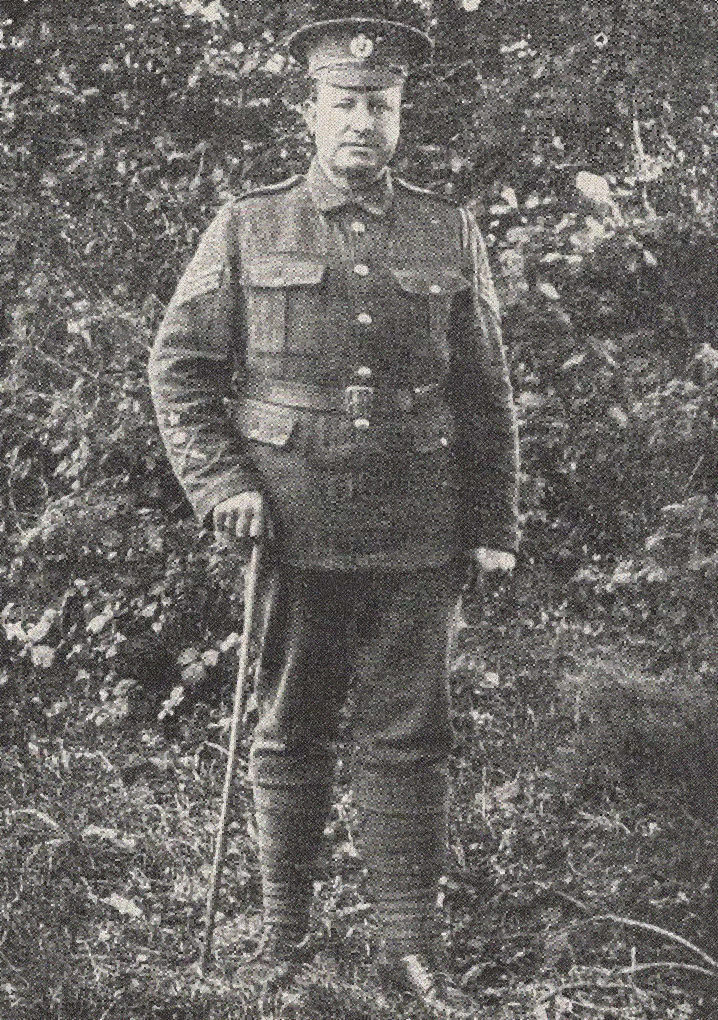
Figure 1. 27548 Company Quartermaster Sergeant
William Lorton Henry Brownrigg
(Image from The Sapper, November 1935)
27548
Company Quartermaster Sergeant
WILLIAM LORTON HENRY
BROWNRIGG
Royal Engineers
By
Lieutenant Colonel Edward De Santis, MSCE, P.E.,
MinstRE
(April 2023)

Figure 1. 27548 Company Quartermaster Sergeant
William
Lorton Henry Brownrigg
(Image from The Sapper, November
1935)
1. INTRODUCTION
This research was prompted by Brownrigg’s obituary that appeared in the November 1935 issue of The Sapper magazine. The majority of the information contained herein is from his obituary, Brownrigg’s family trees found on Ancestry.com and Brownrigg’s military service papers. Some inaccuracies may exist in the narrative due to the difficulty in deciphering the handwritten entries in his service papers regarding places and dates. All other sources cited in this work may be found in the REFERENCE section at the end of the narrative.[1]
2. FAMILY INFORMATION AND EARLY LIFE
Family Information
William Lorton Henry Brownrigg was the son of Charles William Brownrigg (1848-1883) and Susannah Brownrigg, née Pilgrim (1850-?). Charles and Susannah were married in the Parish of St. Peter’s in Regent Square, Middlesex on 16 October 1869.
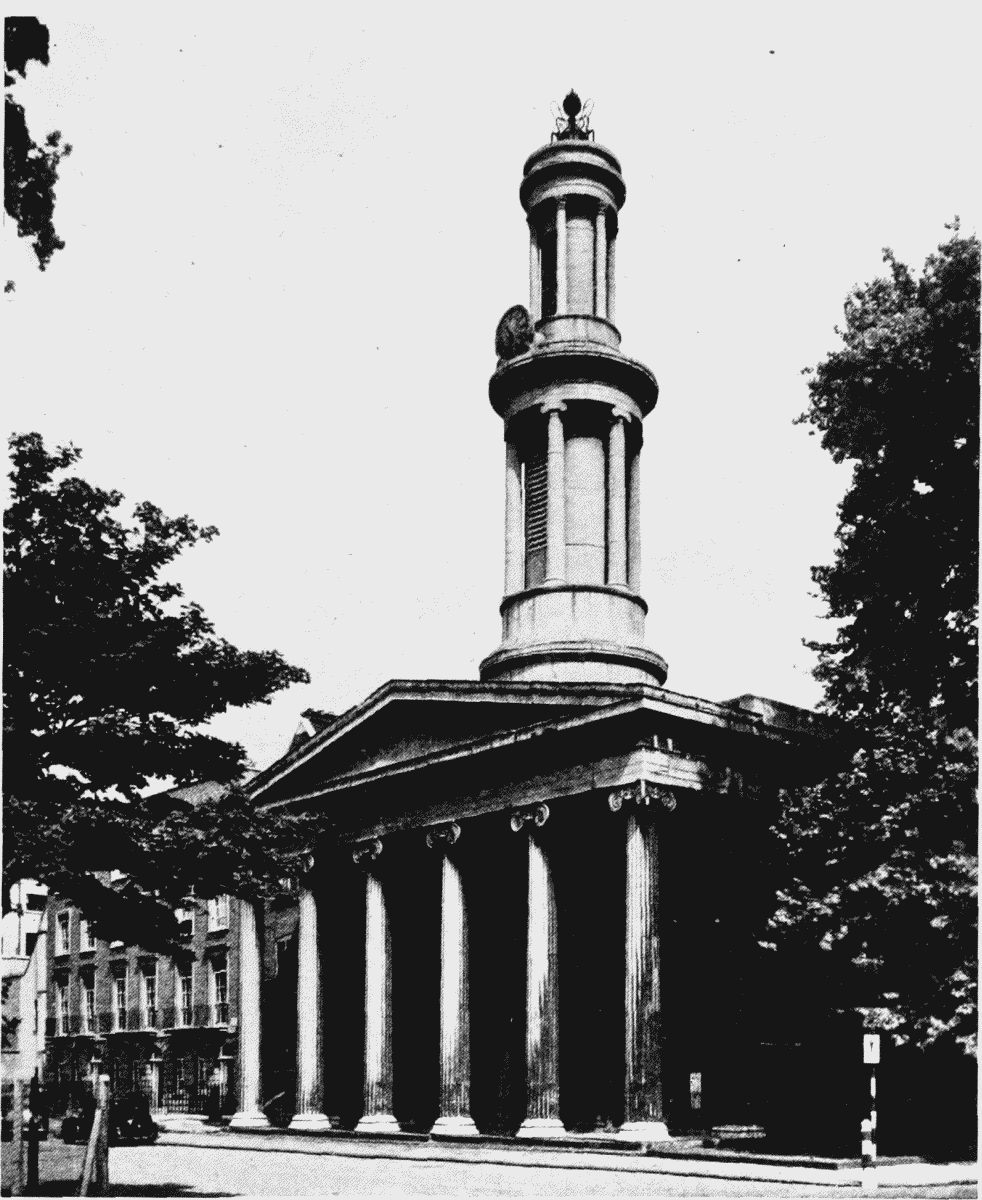
Figure 2. St. Peter’s Church, Regent Square, London,
Tower and West Portico.
(Image courtesy of British
History Online)
In addition to William, the Brownriggs had two other children; Ellan Ann Louisa Brownrigg (1874-1947) and Walter Brownrigg (1878-?)
Early Life
William was born in the Parish of St. Giles, in the Town of London, in the County of Middlesex on 18 December 1870. He was baptized at St. Peter’s Church on 22 January 1871. The table below shows the composition of the Brownrigg family on 2 April 1871 in accordance with the 1871 Census of England. Unfortunately, the address shown for the family in the census no longer exists; that is, the building no longer exists. In place of a vintage residential structure, the site now contains a large apartment block known as Aberdeen Mansions, 1-10 Kenton Street.
1871 Census of England
Census Place: 4 Kenton Street, Bloomsbury, London. |
|||||
Name and Surname of each Person |
Relation |
Marital Status |
Age |
Profession or Occupation |
Birthplace |
Charles W. Brownrigg |
Head |
Married |
23 |
Master |
Bloomsbury, |
Susannah Brownrigg |
Wife |
Married |
21 |
|
Marylebone, |
William L.H. Brownrigg |
Son |
|
3 mos |
|
St. Giles, |
William lived with his parents at the Bloomsbury address until 1893
when he enlisted in the Royal Engineers. Unfortunately, no
census was found for the Brownrigg family in 1881 or 1891.
Charles William Brownrigg had died in 1883, but census searches for
both William and Susannah for those years produced negative results.
A notation in William’s military service papers lists his mother as
Susannah Brownrigg Smith of St. Mark’s Square,
Kentish Town, London. Since William’s father died in 1883 it
may be assumed that this entry to change his mother’s name was made
after 1883 and after she remarried; however, a search for her in the
1891 census under the name Susannah Smith did not yield positive
results.
3. PHYSICAL DESCRIPTION
The following is a description of William L.H. Brownrigg when he enlisted in the Army in 1893.
Age: |
22 years and 7 months |
Height: |
5 feet 7-7/8 inches |
Weight: |
126 pounds |
Chest (minimum): |
35 inches |
Chest (maximum expansion): |
37 inches |
Complexion: |
fair |
Eyes: |
grey |
Hair: |
dark brown |
Distinctive marks: |
Eyebrows meet. Scars on upper lip and on back. Dot on left forearm |
Religion: |
Church of England |
4. RECRUITMENT, ENLISTMENT AND TRAINING
Recruitment
Brownrigg was recruited in London for enlistment by a Sergeant Major [Joyce?] of the 2nd Tower Hamlets Volunteer Engineers.
Enlistment
Brownrigg’s Attestation was for Short Service; that is, 7 years with the Colours and 5 years in the Reserve. Brownrigg was a Carpenter by trade and presumably was living with his mother and siblings when he enlisted. On his Attestation form he indicated that he had never been an Apprentice, that he was not married and that he had never been imprisoned by Civil Power. He stated that at the time of his enlistment he was serving in the 2nd Tower Hamlets Volunteer Engineers but had never served in the regular forces and had never been rejected as unfit for naval or military service. Brownrigg stated that he was willing to be vaccinated and that he was enlisting for service in the Royal Engineers.
Since he had been serving in a unit of the Royal Engineers Volunteers and was a Carpenter (one of the trades of the Corps of Engineers), he was a perfect fit for that Corps. A medical examination given to him on 27 July 1893 found him fit for service in the Army. A Primary Military Examination on that same date found him fit for service in the Royal Engineers. On 29 July 1893 his Attestation was approved by the Assistant Adjutant General for Recruiting in London and he was mustered as a Sapper (“Fair” Carpenter) in the Corps with Regimental Number 27548.
Training
Following the administrative actions involved with his enlistment Brownrigg was sent off for his recruit training. Since he had been serving in a Royal Engineers Volunteer unit at the time of his enlistment in the Regular Army, his recruit training may have been somewhat shortened and modified.
With the exception of Drivers, every recruit enlisted for the Royal Engineers had to have a trade. Pioneers and Sappers were sent to Chatham where they were trained in infantry drill and pioneer duties. The engineer recruits also received musketry training. When the course of training was completed the recruits had to pass an examination and were then transferred to engineer formations, where they received higher pay and could earn extra allowances by working at their special trades.
Following his recruit training, Brownrigg was sent to a Wood Cutting Machinery Course, which he completed on 2 February 1895 with a rating of “Superior” and was remustered from “Fair” Carpenter to “Skilled” Sawyer.
5. POSTINGS, ASSIGNMENTS AND CAMPAIGN SERVICE
Woolwich Arsenal (1895-1898)
Sapper Brownrigg was posted to the 10th Company, Royal Engineers with duties in the carpenter’s shop at Woolwich Arsenal. On 27 July 1895 he was granted Good Conduct Pay at the rate of one penny per day in addition to his regular pay. On 30 April 1896 he was admitted to hospital with a contusion of the chest caused by a timber being sawed in the carpenter’s shop. The accident occurred when Brownrigg was passing a piece of timber under a circular saw with another man placing the other end of the timber over a trestle to guide it. The other man did not do his part properly so the timber tilted over on the trestle and was caught by the revolving saw blade and was thrown against Brownrigg’s chest. He was knocked down and rendered insensible by the blow. When he recovered consciousness he was unable to stand and was taken to the hospital on a stretcher.
A Board of Inquiry was convened to determine the reason for Brownrigg’s loss of time while in hospital. After hearing evidence from a number of witnesses, the Board determined that his injury was received in the line of duty and Surgeon Captain F.E. Morgan stated that “No. 27548 Sapper Brownrigg was admitted to hospital on April 30th, 1896, suffering from a contusion of chest. The injury in all probability will not result in a permanent disability or interfere with his duties as a soldier at any future period.”[2]
The injury suffered by Brownrigg as described above was not the last run-in that he would have with this circular saw at Woolwich Arsenal. On 4 March 1898 he was again admitted to hospital. This time while working with the saw he was engaged in sharpening some wooden pegs. A pile of these pegs was lying on the ground near the saw. He asked his assistant (No. 18 Bugler P.R. Regan[3]) to hand him one of the pegs. As Regan was doing so the peg fell out of his hand and onto the saw blade. It was caught by the blade and thrown into Brownrigg’s face hitting him in the eye. He reported himself injured and was admitted to hospital the same day. He was discharged from the hospital on 12 March 1898.
A Board of Inquiry was convened on 26 March 1898 to investigate Brownrigg’s injury. The Board consisted of the following officers:
· Captain W.R. Stewart, R.E.[4]
· Captain H. Livingstone, R.E.
· Lieutenant G.B. Kensington, R.E.[5]
After examining Brownrigg’s injury, Surgeon Major F.A. Harris, Army Medical Service stated that “No. 27548 Sapper W. Brownrigg, R.E. was admitted to hospital on the 4th March 1898, suffering from contusion of the eye. The injury in all probability will not result in a permanent disability or interfere with his duties as a soldier at any future period.”[6]
After hearing evidence concerning the accident and reading the doctor’s statement, the Board concluded that the injury was received in the execution of Brownrigg’s duty and that it was the result of circumstances beyond his control. It appears that the British Army during the late Victorian period spent a lot of time investigating soldier’s injuries, especially when they lost duty days as a result of those injuries, even if the injuries might be minor in nature.
On 14 July 1898 Brownrigg extended his service to complete 12 years with the Colours. His extension was approved by the Commander Royal Engineers (C.R.E.) at Woolwich and the Certifying Officer of his request was Captain W.R. Stewart, R.E. He was appointed a Lance Corporal on 10 April 1899 and was granted Good Conduct Pay at 2 pence per day on 27 July 1899.
South Africa (1900)
Brownrigg was posted to South Africa on 9 February 1900. Unfortunately, the unit in which he served is not noted in his military record. On 1 April 1900 he was promoted to the rank of 2nd Corporal and then, for a reason not specified, he returned home on 17 August 1900 after spending only a little over six months in South Africa during the war. For his service during the war he was awarded the Queen’s South Africa Medal with clasps [CAPE COLONY] and [ORANGE FREE STATE].
Dover (1900-1904)
Brownrigg was posted to Dover upon his return from South Africa, but again, his military service papers do not indicate the unit in which he was serving. The 11th Field Company of the Royal Engineers was at Dover during this period, so he may well have been serving in that company.[7] The 1901 Census of England indicates that William L.H. Brownrigg and his wife Alice Louisa Brownrigg were living at 22 Randolph Road in Dover.[8]
Brownrigg was promoted to the rank of Corporal on 15 June 1901 and in 1902 he was initiated in the Military Jubilee Lodge of Freemasons in Dover. The Military Jubilee Lodge was founded in 1887 as a permanent lodge to serve military personal stationed in the town and is the third oldest lodge in Dover.[9]
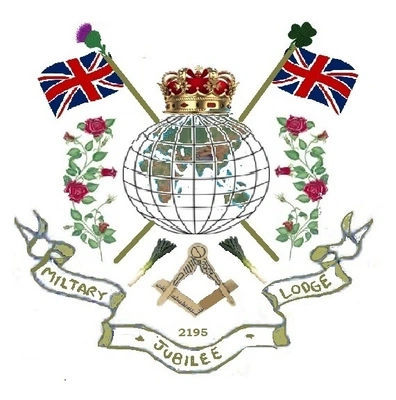
Figure 3. Insignia of the Military
Jubilee Lodge, Dover.
(Image
courtesy of Military Jubilee Lodge No. 2195 E.C.)
On 2 October 1903, while at Dover, Corporal Brownrigg was awarded a Second Class Certificate of Education.
South Africa (1904-1909)
On 23 February 1904 Brownrigg re-engaged to complete 21 years of service. At the time he was serving with “E” Depot Company at Chatham. The officer certifying his re-engagement was a Captain J. Heley. On 1 April 1904 while he was still at Chatham, he was granted Service Pay at the rate of 7 pence per day in addition to his regular and Good Conduct Pay. Service Pay in addition to their regular pay, was granted to men in the Royal Engineers who demonstrated proficiency in their military trades. It was awarded in seven classes, with Class I being the highest.
Corporal Brownrigg embarked for South Africa on 23 December 1904. This time, unlike his posting there during the war, he would remain there for more than 4 years. He was posted to the 55th Field Company which was serving at Pretoria at the time. The officers of the company were:[10]
· Major G.O. Biggs, R.E. (Officer Commanding)
· Captain R.H. Greig, DSO, R.E.
· Lieutenant A.L.C. Neame, R.E.
· Lieutenant M.E. Morgan, R.E.
On 23 June 1907 Brownrigg was promoted to the rank of Sergeant and he served with the company until 25 March 1909 when he received orders to return to the U.K.
Chatham (1909-1911)
Upon his arrival at home, Sergeant Brownrigg was assigned to “B” Company of the Royal Engineers Depot Battalion with the battalion under the command of Lieutenant Colonel A.C. Painter.[11]
The 1911 Census of England and Wales (2 April 1911) shows the composition of the Brownrigg family as follows:
Census Place: 8 Charter Street, Gillingham, Kent |
|||||
Name and Surname of each Person |
Relation |
Marital Status |
Age |
Profession or Occupation |
Birthplace |
William Lorton Henry Brownrigg |
Head |
Married |
40 |
Sergeant, Royal Engineers |
St. Giles, |
Alice Louisa Brownrigg |
Wife |
Married |
36 |
|
Chatham, |
Dorothy Alice May Brownrigg |
Daughter |
|
4 mos |
|
Gillingham, Kent |
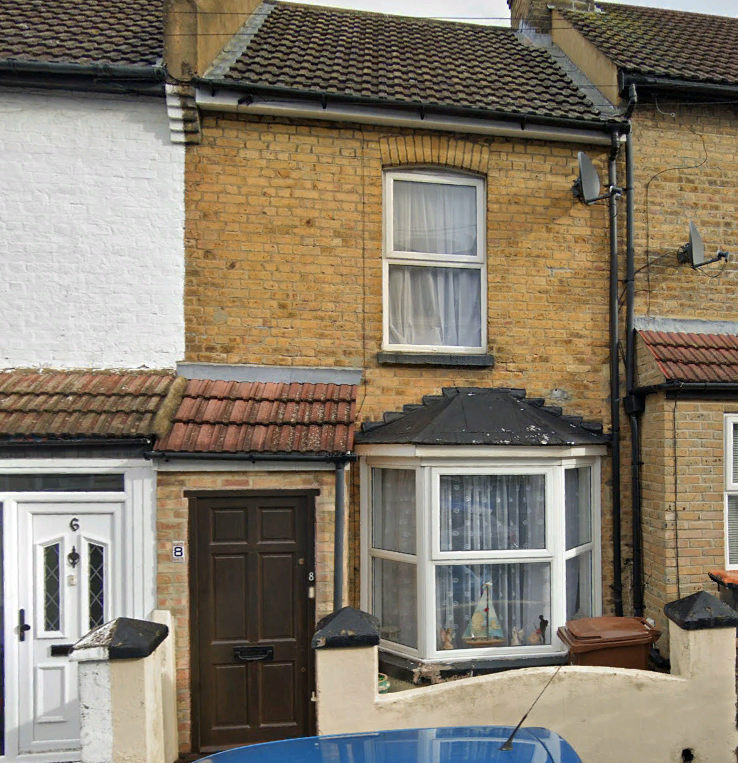
Figure 4. The Brownrigg Residence at 8 Charter Street,
Gillingham, Kent.
(Image courtesy of Google Earth)
Bulford (1911-1912)
Sergeant Brownrigg was posted on 1 May 1911 to the 56th Field Company at Bulford on Salisbury Plain. This company formed part of the 3rd Division with the following officers:[12]
· Major Norman John Hopkins, R.E.[13] (Officer Commanding)
· Captain Charles Napier North, R.E. (Adjutant)[14]
· Captain F.F.H. Nation, R.E.
· Captain T.N. Dunman, R.E.
· Lieutenant Phillip Neame, R.E.[15]
· Lieutenant Ridley P. Pakenham-Walsh[16]
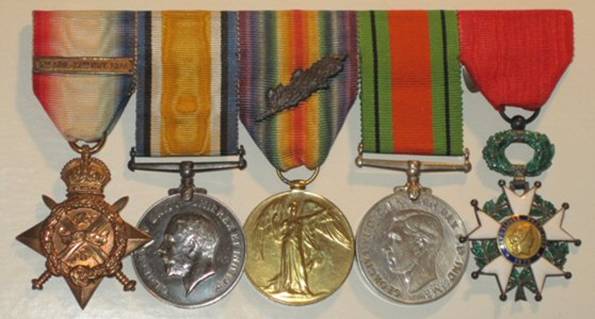
Figure 5. The Medals of Lieutenant Colonel
Norman John Hopkins, R.E.
(Image from the author’s
collection)
|
|
|
Figure 6. Lieutenant
Colonel |
Figure 7. Lieutenant General |
Figure 8. Major General |
In July 1912 Brownrigg became eligible to receive the Army Long Service and Good Conduct Medal (GVR) in accordance with Army Order 104 of 1912 and on 1 November of that year he was posted back to Chatham with “B” Company of the R.E. Depot Battalion, which was then under the command of Lieutenant Colonel G.S. Cartwright, R.E.[17]
Chatham (1912-1914)
While with “B” Company he was promoted to Company Quartermaster Sergeant on 10 November 1912 and he remained with the company until July 1914. On 23 July 1914 he was paid the sum of £5 as a gratuity for his Long Service and Good Conduct Medal and on 26 July 1914 he was discharged on termination of his second period of engagement, having served a total of 21 years. He left the Army just 9 days before the start of the Great War of 1914-1918!
The following sections are presented in tabular form to summarize Brownrigg’s promotions, appointments, military training and qualifications and the medals that he was awarded during his time in the Army. They are provided to give the reader easy access to these aspects of his military career. The tables are followed by sections dealing with his marriage, personal information and post-service life.
6. PROMOTIONS AND APPOINTMENTS
Promotions: Brownrigg received the following promotions during his time in service:
Date of Promotion or Appointment |
|
27 July 1893 |
Sapper, upon enlistment in the Royal Engineers |
10 April 1899 |
Appointed Lance Corporal |
1 April 1900 |
Promoted 2nd Corporal |
15 June 1901 |
Promoted Corporal |
25 June 1907 |
Promoted Sergeant |
10 November 1912 |
Promoted Company Quartermaster Sergeant (Warrant Officer Class II) |
Appointments: Brownrigg received the following appointments during his time in service:
Date of Appointment |
|
27 July 1893 |
Mustered as a Carpenter |
2 February 1895 |
Re-mustered as a Sawyer |
10 November 1912 |
Appointed Company Quartermaster Sergeant |
7. MILITARY TRAINING
Date |
Training Course |
27 July 1893 |
Started recruit training at the School of Military Engineering, Chatham |
2 February 1895 |
Completed the Wood Cutting Machinery Course |
MEDALS, AWARDS AND DECORATIONS
For his service in the South African War of 1899-1902, Lance Corporal Brownrigg was awarded the Queen’s South Africa Medal with clasps [CAPE COLONY][ORANGE FREE STATE]. Upon completion of 18 years of service he was awarded the Army Long Service and Good Conduct Medal (GVR) with a £5 gratuity.
9. RELEASE FROM SERVICE
Company Quartermaster Sergeant Brownrigg was released from service on 26 July 1914 on termination of his second period of engagement. His total service was reckoned as shown in the tables below:
Location |
|
Chatham |
27 July 1893 – January 1893 |
Woolwich |
January 1893 – 8 February 1900 |
South Africa |
9 February 1900 – 16 August 1900 |
Dover |
17 August 1900 – 22 December 1904 |
South Africa |
23 December 1904 – 16 April 1909 |
Chatham |
17 April 1909 – 31 April 1911 |
Bulford |
1 May 1911 – 31 October 1912 |
Chatham |
1 November 1912 – 26 July 1914. |
NOTE: The exact date of his posting to Woolwich in January 1893 is not shown in his military service papers.
Location |
Period of Service |
Home Service |
16 years, 1 month and 27 days |
Service Abroad |
4 years, 9 months and 33 days |
Total Service |
21 years |
NOTE: His Volunteer service in the 2nd Hamlet Towers Royal Engineers Volunteers is not included above as the dates of that service is not known.
Marriage
Alice Louisa Brownrigg (Wife)
William Lorton Henry Brownrigg married Alice Louisa Stead (1875-?) on 17 January 1900 at Chatham, without leave, that is, without the permission of his commanding officer. Alice was from Chatham, so it was apparent that they met each other while William was serving there. Marriage with the approval of the soldier’s commanding officer is what is referred to as “with leave” in the soldier’s papers. Marriage was allowed to all the staff-sergeants, to 50% of the other sergeants, and to only 4% of the corporals and privates in the cavalry, artillery and engineers, and 3% in the infantry. Corporals and men had this concession made them on condition of their having served seven years, and that they have two good conduct badges, and prove that they have 5 Pounds in the savings bank.[18] At the time of his marriage Brownrigg was not even a Corporal and did not have seven years of service, although he did have two good conduct badges. It is unlikely that had he applied for permission to marry, that it would have been granted to him.
A man who married without permission normally had a hard time indeed, for his wife was denied quarters of any sort and they were given no extra rations. The wife may have been forced to work to make ends meet.[19] This did not seem to be the case for Brownrigg and his wife as they were living at 22 Randolph Road in Dover in 1901. The 1911 Census of England and Wales also shows that when he was a Sergeant he had still not been brought on the married rolls, but he and his wife and infant daughter were living at 8 Charter Street in Gillingham (see Figure 4). Brownrigg and his family were brought on the married rolls in July 1913 when he was a Company Quartermaster Sergeant, 13 years and 9 months after his marriage. This seems to have been an inordinate amount of time for him to wait for this action.
Dorothy Alice May Brownrigg (Daughter)
The Brownriggs’ only child, Dorothy Alice May (1910-1993) was born in Gillingham on 14 November 1910 while Sergeant Brownrigg was again serving at Chatham and just prior to his posting to the 56th Field Company at Bulford. Dorothy was baptized in Gillingham on 9 December 1910.
Dorothy Alice May Brownrigg married Bertie Belton (1901-1961) in Essex on 6 November 1935. The 1939 Register of England shows Bertie working as a Farmer at Old Hall Farm in Rochford, Essex. Dorothy also was living at the farm. Also working on the farm at the time was a man named Percy S. Belton, 10 years senior to Bertie and perhaps his elder brother.
Dorothy and Bertie did not have any children. Bertie died in Essex on 23 February 1961. Dorothy died in Great Wakering, Essex on 24 January 1993.
Parents
Charles William Brownrigg (Father)
William’s father Charles William Brownrigg (1848-1883) was a native of Bloomsbury, London. Charles worked as a Master Gasfitter, a man who supervised and inspected the installation and repair of gas lines and gas equipment such as regulators and heating units in residential, commercial and industrial establishments. He died on 21 July 1883 in Holborn, London at the young age of 35.
Susannah Brownrigg, née Pilgrim (Mother)
William’s mother was a native of St. John’s Wood in Middlesex. After the death of her husband, Charles Brownrigg, in 1883, Susannah apparently married a man named Smith, as discussed in Section 2 above. No additional information could be found about her except that she appears to have lived out her life in London.
Siblings
Ellen Ann Louisa Brownrigg
Ellen Ann Louisa Brownrigg (1874-1947) was born in St. Pancras, London on 25 February 1874. She married James Griffiths (1873-1959) and they had four children, three boys and a girl. James and Ellen lived most of their lives in the London area. James appears to have died in North Walsham, Norfolk in October 1959. Ellen died in Barnet, Middlesex at the age of 73 and was buried in Barnet on 4 September 1947.
Walter Brownrigg
Walter Brownrigg (1878-?) also was born in St. Pancras, London. He appears to have remained a bachelor all his life, living in the London area. His date of death is not known.
11. POST SERVICE LIFE
Soon after his discharge from the Army in 1914, former Company Quartermaster Sergeant Brownrigg was employed as a civilian at Shoeburyness, perhaps in the Office of the Commander Royal Engineers of the district there. He also became a Special Constable. Special Constables assisted the regular police at the scenes of accidents, fires or incidents – helped control situations on the streets, ensuring that people were safe and provided security and crowd control at major public events thereby preventing injuries and disorder. During the years from 1914 to 1918 Special Constables also performed war-related duties.
In 1931 Brownrigg was discharged from the Special Constabulary, having reached the age limit for such service. He resided at that time with his wife as 17 Ness Road in Shoeburyness.[20]
On 21 September 1934 Brownrigg was admitted to General Hospital at Southend-on-Sea with a heart problem. He died on 26 September 1935 at the age of 65 and was buried in St. Andrew’s Churchyard in Shoeburyness on 1 October 1935 with semi-military honours.[21]
Probate of his Will took place at London on 20 December 1935 with his effects going to his widow. Alice was left with £580-3s-5p, or about $80,900 US in 2023 currency.
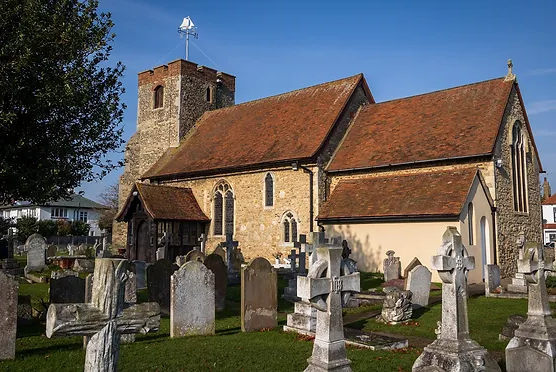
Figure 9. St. Andrew’s
Churchyard, Shoeburyness, Essex.
The Final Resting Place of
William Lorton Henry Brownrigg.
(Image
courtesy of The Parish of St. Andrew’s, Shoeburyness, Essex
Web Site)
REFERENCES:
Army Lists
The Quarterly Army List, April-May-June 1903, p. 441.
Books
1. GRIERSON, J.M. Scarlet Into Khaki: The British Army on the Eve of the Boer War. Greenhill Books, London, 1988, p. 241.
2. FARWELL, B. Mr. Kipling’s Army: All the Queen’s Men. W.W. Norton & Company, New York, 1981, p.228.
Census
1871 Census of England.
1901 Census of England.
1911 Census of England and Wales.
1939 Register of England.
Civil Documents
Baptism Certificate, 1871.
Ledger of the Military Jubilee Lodge of Freemasons, Dover, Kent. 1910-1921.
Probate Calendar, 1935.
Family Trees
William Lawton [sic] Henry Brownrigg (by IcTc74)
Charles William Brownrigg (father) (by IcTc74)
Susannah Pilgrim (mother) (by IcTc74)
Dorothy Alice May Brownrigg (daughter) (by ddbeardshaw)
Internet Web Sites
British History Online
https://www.british-history.ac.uk/survey-london/vol24/pt4/plate-63
The Military Jubilee Lodge of Freemason, Dover
https://militaryjubilee2195.co.uk/
The Parish of St. Andrew’s, Shoeburyness, Essex
https://www.southshoebury.org/
Periodicals
The Sapper, November 1935, pp. 98 and 109. Obituary.
The Royal Engineers List, January 1908, p. xxi.
The Royal Engineers List, January 1910, p. xxi.
The Royal Engineers List, January 1912, pp. xvi and xxi.
Service Papers
Short Service Attestation (Army Form B. 265) consisting of:
a. Description on Enlistment.
b. Certificate of Medical Examination.
c. Certificate of Primary Military Examination.
d. Certificate of Approving Field Officer.
Statement of Services.
Military History Sheet (Army Form B. 178).
Proceedings of a Court of Inquiry (Army Form A. 2.).
Qualification Report: Course of Instruction in Wood-Cutting Machinery.
Regimental Conduct Sheet
ENDNOTES
[1] In his family trees posted on Ancestry.com his first middle name is spelled Lawton. This appears to come from an error made on his Baptism certificate. According to his Attestation Paper when he enlisted in the Army, his first middle name is Lorton.
[2] The description of his injury and the results of the Board of Inquiry are contained in Brownrigg’s service papers.
[3]No. 18 Bugler P.R. Regan rose to the rank of Warrant Officer Class 1 and then was commissioned, rising to the rank of Captain. He was a Member of the British Empire (MBE) and the recipient of the Military Medal (MM), the Queen’s South Africa Medal and the Army Long Service and Good Conduct Medal. Born: 21 May 1881. Lieutenant (QM), 13 December 1925. Captain (QM), 13 December 1933. Honorary Major, 21 May 1936.
[4] Later, Colonel.
[5] Later, Lieutenant Colonel.
[6] This last sentence of the Surgeon’s comments appeared to be a standard phrase used in all cases similar to this one.
[7] Quarterly Army List, 1903.
[8] There is a new building at this address in 2023.
[9] Although the lodge has ceased being a lodge exclusively for serving military personal, it retains many of its military traditions.
[10] The Royal Engineers List, January 1908, p. xxi.
[11] The Royal Engineers List, January 1910, p. xxi.
[12] The Royal Engineers List, January 1912, p. xvi.
[13] Later, Lieutenant Colonel. Hopkins medals are in the author’s collection.
[14] Later, Major. Killed in action during the Great War of 1914-1918.
[15] Later, Lieutenant General Sir Phillip Neame, VC.
[16] Later, Major General Ridley P. Pakenham-Walsh, DSO, MC. Author of two volume of The History of the Corps of Royal Engineers.
[17] Later, Brigadier General.
[18] GRIERSON.
[19] FARWELL.
[20] The homes at this site are now modern apartment buildings.
[21] Obituary – The Sapper, November 1935.